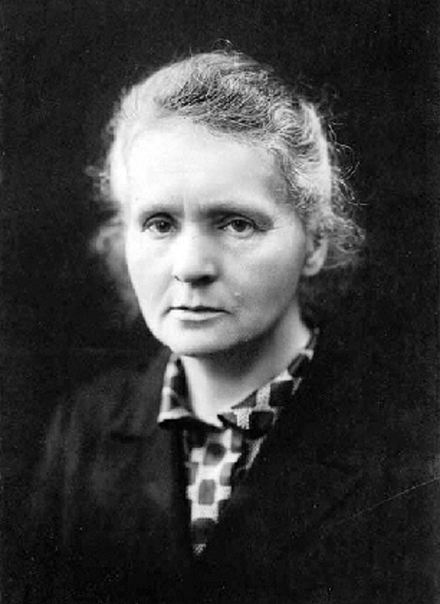Important dates
- November 7, 1867 : Marie Curie was born (Maria Salomea Skłodowska)
- 1903 Nobel Prize for Physics
- 1911 Nobel Prize for Chemistry
- 1922 radiation in the medical field thanks to her research
- Died July 4, 1934
“Have no fear of perfection; you’ll never reach it”
At the same time, she was studying at the nationalist “free university” and readings to Polish women workers.
Skłodowska in 1891 moved to Paris to follow Paul Appel’, Gabriel Lippmann’ and Edmond Bouty’s class at the Sorbonne and graduated first in physical science in 1893.
July 25, 1895, one of the most notorious relationships started. Skłodowska became known as Marie curie after marrying Pierre Curie in 1898 and together they discovered polonium (named after Marie’s motherland) and radium the same year. Curie first discovered radioactivity after conducting tests on uranium for the first time in 1896. The Curies also discovered thorium at the same time as G.C. Schmidt did, which developed her interest in minerals. They discovered polonium and radium, but both struggled to understand and master radiation and produce metallic radium without the help of André Debierne.
Marie Curie was also a mother of two daughters, Irène and Ève, at the time she started lecturing physics and became chief assistant in her husband’s lab in 1900. In 1903, Marie graduated with her doctorate of science, received the Royal Society’s Davy Medal and the Nobel Prize for physics.
“Be less curious about people and more curious about ideas.”
Sadly, in April 1906, Pierre Curie died. As devastating as it was, this unfortunate event only made her more determined to study and continue her research. So much so, that after his death, she was recruited to teach in the Sorbonne in her husband’s position. She became the first woman to ever teach there.
And after years and years of hard work, Marie finally discovered a way to get metallic radium that led to her obtaining her second Nobel prize for chemistry.
In 1914 Curie eldest daughter Irene, assisted her mother with research at the brand new radium institute built in the same year During WWI they worked on the improvement of the usability of O-radiography, which is a world-shaking innovation that resulted in the use of radiation in the medical realm in 1922.
“I was taught that the way of progress was neither swift nor easy.”
Then in 1932, after lecturing in multiple countries including the United States, Belgium and Czechoslovakia, Marie became affiliated to the International Commission on Intellectual Co-operation and had the opportunity to attend the inauguration of the Curie Foundation in Paris.
With her lectures and different institutes, Curie exposed how important it was for scientists all over the world to understand the necessity to use all different sources of radiation for research. A philosophy that had for effect the finding of neutrons by J. Chadwick (1934) as one of many examples.
Marie Curie died on July 4, 1934 of leukemia induced by radiation. Her life work was crucial in the development of the world we now know as she permitted the understanding and utilization of radiation in modern research in physics, chemistry and medical fields. She was a major influence at an era where and on fields where only men were considered actors.

